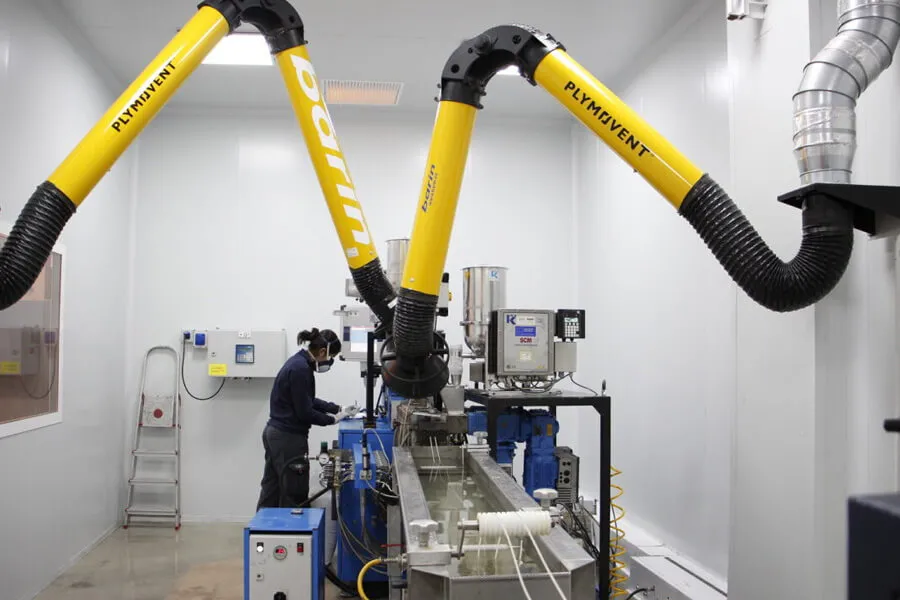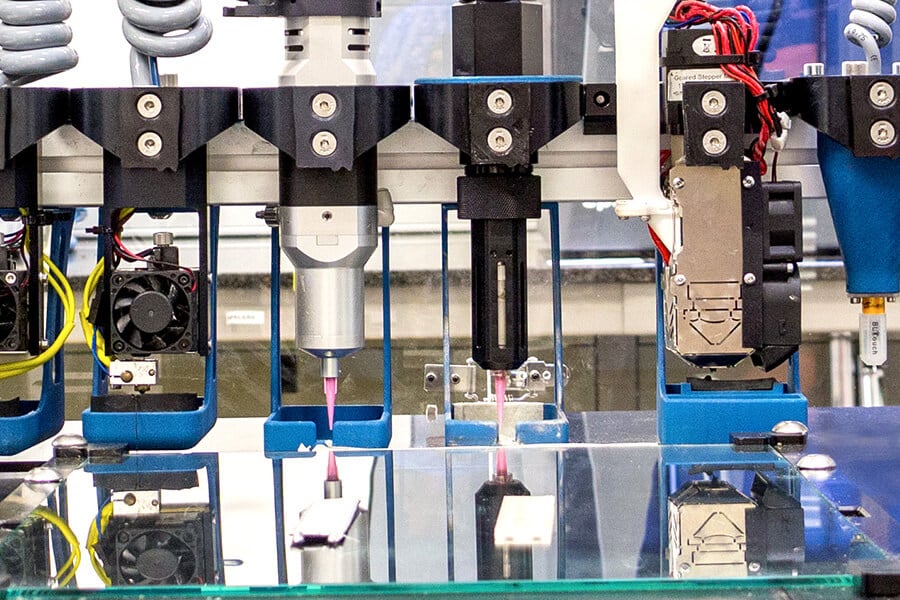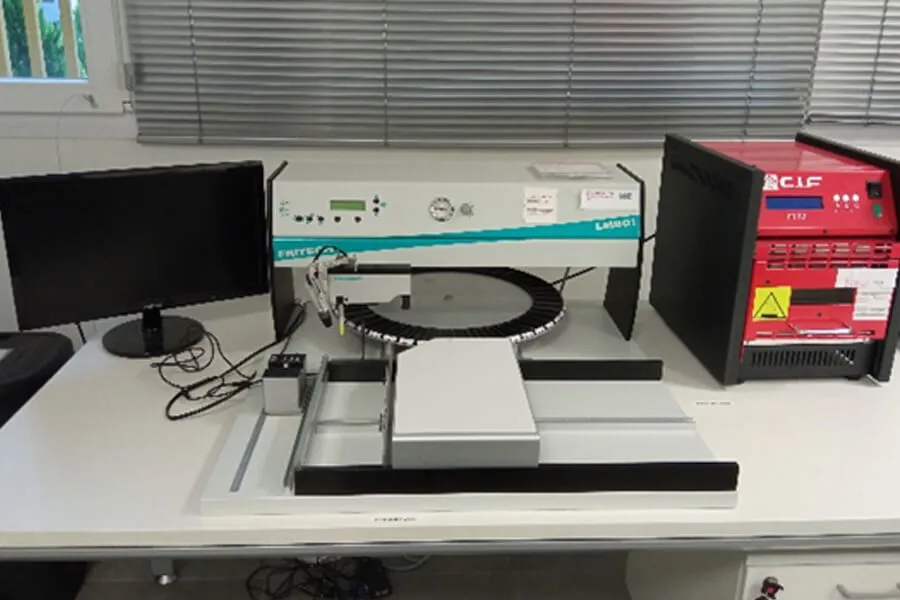Plastronics
Plastronics is a new line of research in the field of electronics that involves embedding electronic components in plastic materials, developing flexible electronics and using polymer-based conductive materials from organic and hybrid materials.
Plastronics makes it possible to obtain lightweight, flexible devices that can be integrated into certain products with complex geometries. It also has the advantage of being an economical technology because of its large-scale processing capability, unlike silicon electronics.
Plastronics is an emerging line of development with great potential for growth in different industrial areas such the automotive, aeronautics, aerospace, consumer electronics and white goods industries.
Plastronics solutions
The solutions and processing technologies in which plastronics can be applicable mainly include the following:
1. Synthesis of conductive polymers
- They can provide a wide range of conductivity advantages. Their synthesis and use make it possible to develop plastic parts with electronic functions.
2. Integration of conductive materials into thermoplastics and thermosetting resins
- Polymers with integrated electrically or thermally conductive fillers are obtained using compounding technologies and combine the electrical conductivity of metals and carbonaceous fillers with the properties of polymeric materials. They are lightweight, inexpensive, easy to process, and resistant to chemical attack and corrosion.
- These properties have generated interest in this type of materials for common consumer goods and advanced applications (e.g. aeronautics, electronics, nonlinear optics, biomedicine).
- These materials are currently being implemented in additive manufacturing processes to obtain parts using 3D printing technologies with electronic properties.
3. Flexible printed electronics
- This refers to electronic devices that can be folded, stretched and formed regardless of their material composition without loss of functionality.
- Flexible electronics is based on the combination of new materials (conductive, semiconducting and dielectric inks), cost-efficiency and large-scale production processes, which open up new fields of application.
- The main properties and advantages of flexible printed electronics include thinness, reduced weight and flexibility.
- It also enables the development of a wide range of electronic components and applications such as polymer solar cells based on organic photovoltaics (OPVs), organic light emitting diodes (OLEDs), organic thin film transistors (OTFT), RFID antennas, sensors and electrodes, as well as the integration of these devices into smart objects, which can be directly produced and integrated using low-cost coil production processes.
4. In Mould Electronics (IME)
- IME consists of the integration of flexible electronics into complex geometries and 3D parts by thermoforming and injection moulding.
- Flexible electronics combines new materials (conductive, semiconducting and dielectric inks) with efficient large-scale mass production processes to develop thin, lightweight and flexible devices such as polymer solar cells based on organic photovoltaics (OPVs), organic light-emitting diodes (OLEDs) and RFID antennas, sensors and electrodes.
- In-mould electronics applies thermoforming and injection moulding processes to these printed electronic circuits and devices to embed the electronics in fully functional, high value-added 3D parts.
Equipment
- Extrusion and material processing equipment
- Extrusion equipment
- Functional filament processing equipment for 3D printing
- 2D and 3D printed electronics equipment
- High-precision 2D screen printing equipment
- Multimaterial 3D printing pilot plant
- In-Mould Electronics equipment
- Vertical-horizontal injection molding equipment
- Thermoforming equipment
- Assembly and characterization equipment
- Pick and place equipment
- Four-point equipment”
Over 15 years working on the development of materials for applications such as capacitive surfaces, heating, or electromagnetic shielding.
We analyze your needs to develop the product using suitable processing solutions and technologies.
We have state-of-the-art equipment for the development of products and technological services.






